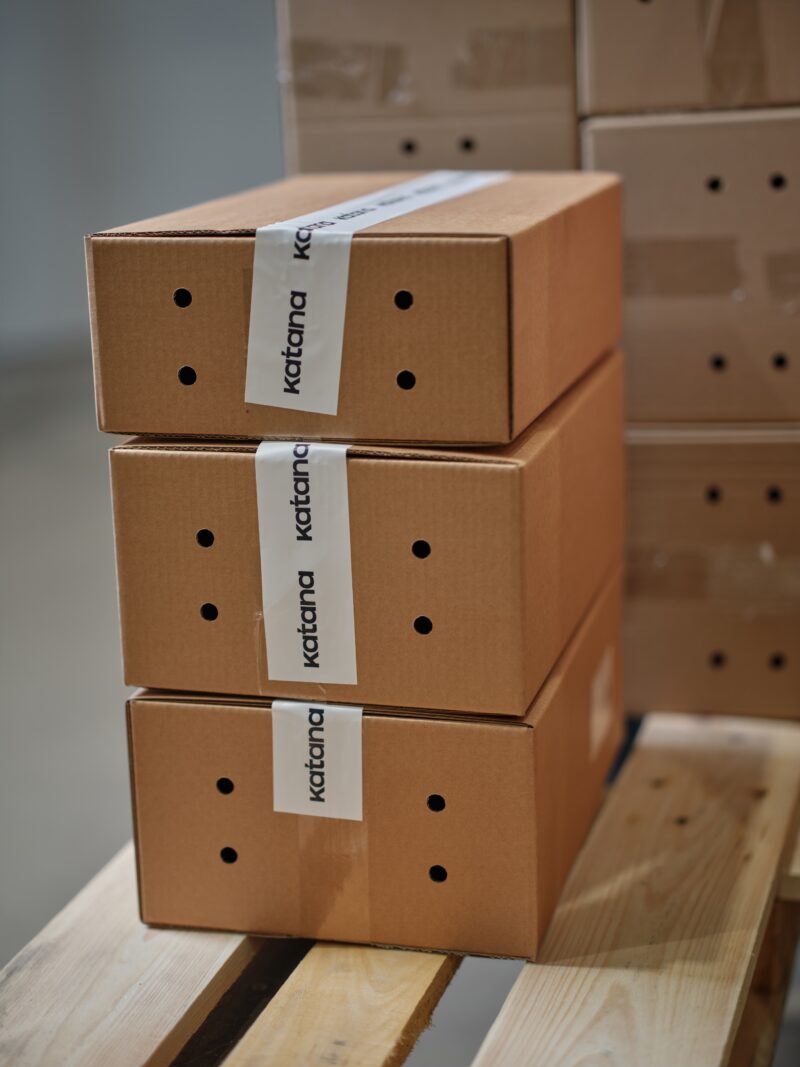Are your channels talking? Fixing the 3 most common data silos in SMB ops
When sales, inventory, and production systems don’t talk to each other, the same problems keep coming back: overselling, stockouts, and messy books. Here are the most common data silos holding product businesses back and what changes when Shopify, Amazon, QuickBooks, and fulfillment tools start sharing information.

Andreia Mendes

You can’t fix what you can’t see.
And for most growing product businesses selling through Shopify, Amazon, wholesale, and retail, visibility is exactly what’s missing.
An order comes in on Shopify. Inventory looks fine there, but QuickBooks still shows stock that sold days ago. Amazon lists products already promised to wholesale customers. The warehouse rushes to sort it out, production waits on missing parts, and finance only finds out about the mismatch after the month closes.
It’s the same story in thousands of SMB operations: every tool holds its own version of reality, but none of them agree. Each system runs on its own data, so someone always ends up double-checking, copying, or fixing things manually.
Over time, that takes a toll and you stop trusting your numbers. Delivery dates slip. Inventory feels unpredictable. And even when things are running smoothly, there’s that quiet sense that something, somewhere, probably isn’t right.
There are three places where these silos show up most often: between sales and inventory, inventory and accounting, and production and fulfillment. Connecting those points is what helps SMBs run with fewer surprises.
What happens when systems don’t talk
When your systems don’t talk to each other, problems rarely stay in one place. They spread across the business, and show up as time lost, stock gone missing, and bad customer experiences.
You see it when a sales spike leads to a stockout because inventory wasn’t synced, or when accounting can’t close the books because orders and invoices don’t match. Production slows down because someone has to “double-check” what’s actually in stock.
Teams try to stay ahead of it with spreadsheets and workarounds, but that adds layers of risk and creates confusion for whoever’s next in line.
Our partner DataAutomation, who helps product businesses integrate their tools with Katana, worked with one company that spent an entire week of labor each month just re-entering orders from their web store into their production system. Once the data started flowing automatically between Shopify, Katana, and ShipStation, that time dropped to fifteen minutes. Another business saw their inventory accuracy jump after automating data flow between their e-commerce store, Katana, and their fulfillment app – before that, stock counts were off by nearly 40%.
This happens because Katana acts as a live source of truth. Every sales order updates inventory, adjusts material availability, and sends the correct data to accounting and shipping tools automatically. For example, when order data syncs from Shopify and material availability adjusts in real time, the team doesn’t have to double-check spreadsheets or manually update QuickBooks. When that flows to ShipStation, every shipment and cost is logged without someone having to remember to do it.
The places where that flow fails are pretty consistent across SMBs. Data breaks at the handoff points: where orders meet inventory, where inventory meets accounting, and where production meets sales promises.

The sales-to-inventory gap
For many product businesses, the connection between sales and inventory is where things first start slipping. Orders come in from Shopify, Amazon, and wholesale accounts, each updating its own set of numbers. But the inventory behind those sales often lives in separate systems… or in someone’s head.
That’s when the small problems start to add up. Someone oversells, someone else apologizes to a customer, and soon every sale needs a manual check before it can move forward. Nobody’s making mistakes, the systems just aren’t keeping up with how quickly things move.
We worked with an apparel company in this exact situation. They were selling through several channels and restocking regularly, but every new shipment set off a round of spreadsheet updates and cross-checking. After connecting Shopify, ShipHero, and Katana, their system finally stayed aligned: new orders, stock updates, and fulfilled shipments all updated automatically. The change cut hours of daily admin work and reduced customer complaints by 70%.
Katana tracks what’s sold, what’s committed, and what’s left to ship, no matter where the order came from. Teams can see what’s actually available without relying on exports or manual adjustments, which means they can promise delivery with confidence.
Most multi-channel businesses don’t have that visibility. Every order feels like a small risk because the numbers might be off. When the data stays current, those surprises mostly disappear.
Inventory and the books
Ask anyone running a product business how often their books match what’s actually in stock, and you’ll probably get a quiet laugh because it’s rarely perfect.
A purchase order arrives late and materials get used but not recorded. Sales go through, but costs aren’t updated until the end of the week. By the time accounting reviews the numbers, the stock count doesn’t match what’s in the system because the data in the books hasn’t kept up with what’s happening on the floor.
We’ve seen this in product-based SMBs again and again. Teams spend hours reconciling spreadsheets, only to find their margins were off the whole time. One company we worked with only realized how far off their data had drifted when a supplier price increase wiped out their profit on a best-selling item, weeks after it happened.
Katana helps close that loop between what’s sold, what’s used, and what’s recorded. Because it tracks the movement of materials, finished goods, and sales in one place, the financial side doesn’t have to chase the operational one. Costs, quantities, and orders all flow automatically into accounting – whether that’s QuickBooks, Xero, or another tool – so what you see in the books reflects what’s actually happening on the floor.
When finance and operations share the same numbers in real time, decisions come from a clearer place. You’re not constantly asking “What went wrong?” because you can focus on what comes next. That alignment matters most when it’s time to deliver, because what happens between production and fulfillment is what determines whether promises to customers get kept.
Production, fulfillment, and what was promised
Even with sales and inventory fully aligned, things can still go wrong once production enters the mix. This is where every promise to a customer depends on how well teams share information.
It usually starts small. Sales confirm an order, production doesn’t see it right away, and materials aren’t where they need to be. The order sits in limbo until someone notices. By the time it moves forward, delivery dates have shifted, and the team spends another morning sorting through what’s ready to go and what isn’t.
One of our customers, a company manufacturing custom window shades, ran into this constantly. Every order had unique dimensions, materials, and add-ons, and turning that into production instructions took nearly a full day of manual work. After linking their web store with Katana, every order created its own production record automatically. The team could start work as soon as the order came in, without extra data entry or assumptions.
We’ve seen fulfillment teams face the same issue in different forms: stock is ready, but it’s not clear which orders to prioritize or what’s been promised to whom.

In every case, the real difference comes down to how clearly people can see what’s happening around them. Reliable delivery depends on that kind of shared awareness.
A customer promise shouldn’t sit only with sales. It’s something the whole operation owns, which means production knows what’s been committed, fulfillment knows what to prepare, and sales doesn’t have to rely on assumptions. Everyone understands what it takes to keep that promise and spots the risks early.
That’s the real outcome of better visibility. It creates the kind of teamwork and control that steady growth depends on – something we’ll come back to as we look at how connected systems change the way SMBs operate day to day.
How things change when systems sync
Every gap we’ve looked at starts the same way: information sitting in separate places. Sales doesn’t see what inventory is doing, inventory doesn’t see what accounting knows, and production and fulfillment are working off different versions of the truth. People fill in the blanks however they can, usually by adding steps, and eventually those workarounds just become the way things are done.
The solution starts with helping people understand what’s happening across the business, not just in their own area. That doesn’t happen by replacing your tools, but by making sure information moves between them.
We see this with product businesses that connect their systems through Katana. They’re still using Shopify, Amazon, QuickBooks, ShipStation – the same tools they had before, but now those tools are talking to each other and that changes everything. Teams get clarity and a lot more time to improve and grow the business.
If you’re dealing with this right now, notice where people have to ask for updates or double-check numbers. Look for the points where someone is re-entering data or second-guessing whether a number is current. Those moments show you where the gaps are, and once you see them you can start connecting the systems that need to stay in sync.

Andreia Mendes
Table of contents
Get your channels in sync
Katana connects your sales channels, inventory, production, and accounting, and updates all the numbers automatically in real time.
Get inventory trends, news, and tips every month
Get visibility over your sales and stock
Wave goodbye to uncertainty with Katana Cloud Inventory — AI-powered for total inventory control